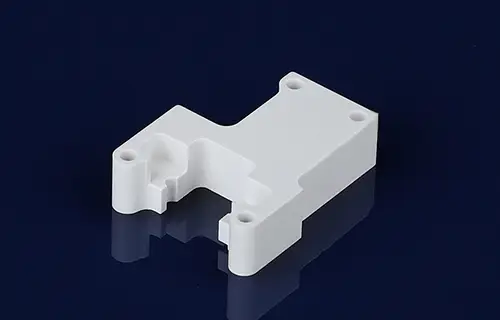Advanced ceramics are carefully designed to function stably in high temperature environments. These materials can withstand temperatures of 2200°C. Although there are a few materials that exceed this temperature, they are relatively rare. Traditional materials (metals and polymers) have a low ability to withstand high temperatures and cannot function in high temperature environments. For example, hypersonic aircraft, gas turbine components, electronic radiators, etc., have strict requirements on the working temperature of materials. As an engineering material with excellent performance, advanced ceramics can perfectly adapt to various industries such as aviation, energy, and electronics.
Key Categories of High Temperature Ceramics

Known for its high hardness and resistance to wear.
The maximum operating temperature can reach 1765°C

Shapal HI-M is a high-performance machinable aluminum nitride (AlN) ceramic
The maximum operating temperature can reach 1900°C

Lightweight and resistant to thermal shock.
The maximum operating temperature can reach 1900°C

Boron carbide ceramics are ultra-light, wear-resistant, and highly resistant to neutron radiation.
The maximum operating temperature can reach 2000°C
Operating temperature comparison table
High temperature applications of advanced ceramics
1. Aerospace
Thermal Protection Systems: Ceramic matrix composites (CMCs) in spacecraft and hypersonic vehicles.
Turbine Components: Silicon carbide (SiC) and silicon nitride (Si3N4) for jet engine blades and nozzles.
2. Energy and Power
Gas Turbines: High-performance ceramics withstand extreme temperatures, improving efficiency.
Nuclear Applications: Uranium oxide (UO2) and zirconium-based ceramics in nuclear fuel rods.
3. Industrial Applications
Kiln Furniture: Alumina and zirconia ceramics are used in furnace linings and supports.
Foundry Equipment: Crucibles and molds for molten metals.
4. Electronics
High-Power Electronics: Aluminum nitride (AlN) ceramics dissipate heat in semiconductor devices.
Vacuum Environments: Ceramics like boron nitride (BN) are ideal for high-temperature electrical insulators.
5. Medical Applications
Dental Furnaces: Zirconia ceramics in sintering furnaces for dental prosthetics.
Implants: High-temperature sterilization-resistant materials.
Choosing the Right Material
Selecting the correct ceramic involves evaluating factors like:
- Maximum operating temperature.
- Exposure to oxygen or corrosive environments.
- Mechanical stress and thermal cycling.
- Electrical and thermal conductivity requirements.
Conclusion
The role of advanced ceramics in high-temperature applications is very significant. It can maintain its excellent performance in harsh environments and play a huge role whether it is for rockets or chips.If your project requires high-temperature ceramics, please contact our experts to provide you with quality services
